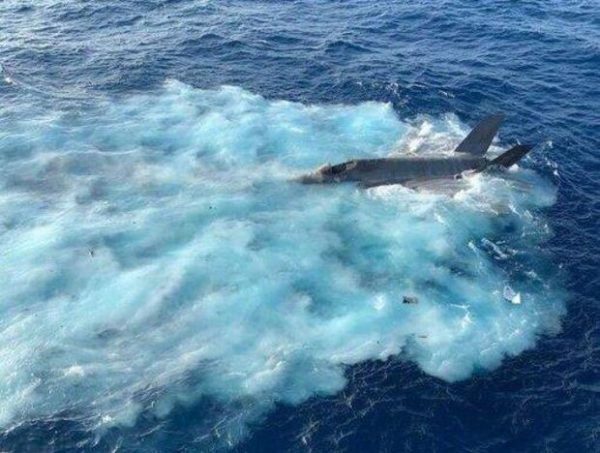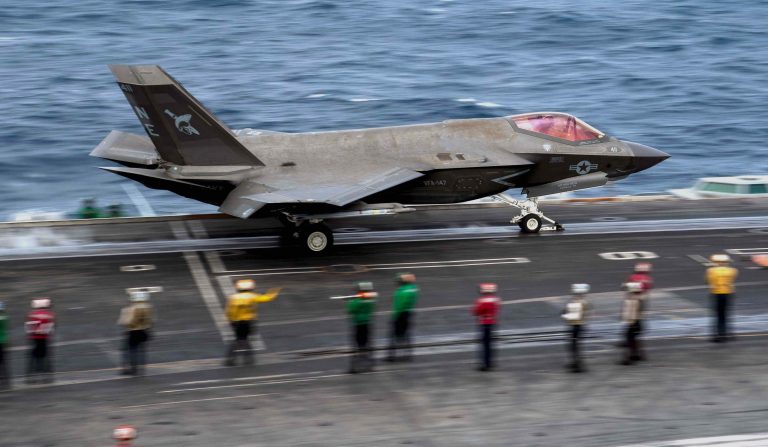The U.S. Navy has retrieved the F-35C Lightning II plane that fell off a carrier and sank into the South China Sea on Jan. 27.
A team made up of divers from the 7th Fleet’s Task Force and a Navy salvage and diving team recovered the wreckage from the bottom of the ocean at about 12,400 feet below the surface, the Navy said in a press release on Thursday, March 3.
The search and recovery team used a remotely operated vehicle to rig and lift the aircraft with a crane hook attached to the salvage ship, the Picasso.
During “routine military operations,” the F-35C had a landing mishap while on the deck of aircraft carrier USS Carl Vinson and plunged into the depths of the ocean. The crash resulted in the injury of six sailors as well as the pilot, who managed to eject from the plane before it splashed into the ocean. All injured parties were reported to be in stable condition and undergoing recovery following the accident.

“An F-35C Lightning II assigned to Carrier Air Wing (CVW) 2, embarked aboard USS Carl Vinson (CVN 70) had a landing mishap and impacted the flight deck and subsequently fell to the water during routine flight operations,” a statement released by the U.S. Navy on Jan. 28 said.
Crashed F-35 technology was like a ‘flying computer’
Equipped with classified technology over USD$100 million, the stealth plane was packed with “networking sensors” that the Chinese navy does not have. Defense consultant Abi Austen pointed out that the F-35 jet was like a “flying computer designed to link up other assets – what the Air Force calls ‘linking sensors to shooters’.”
READ MORE:
- China Warns US Navy After Warship Sails Through South China Sea
- ‘An Act of Intimidation’: Australia Takes China to Task Over ‘Reckless’ Laser Incident Off North Coast
- US Navy Rushes to Retrieve Crashed F-35 From South China Sea
Success
You are now signed up for our newsletter
Success
Check your email to complete sign up
China doesn’t have this technology and so getting their hands on it would give them a huge leap forward, Austen said, adding that “If they can get into the 35’s networking capabilities, it effectively undermines the whole carrier philosophy.”
Although China’s foreign ministry spokesman Zhao Lijian said the Chinese government had no intention of searching for the crashed plane, experts believed the crashed aircraft could signify a win for China — which claims almost all of the South China Sea as its own territory.
“We have no interest in their aircraft. We urge the country concerned to do things that are conducive to regional peace and stability, rather than flex muscles in the region,” Zhao said following the crash.
According to the Navy, the Vinson was on a patrol at the time with the intention of “challenging [China’s] territorial claim and defend international freedom of navigation.”
China’s growing economy in the late 1990s and early 2000s has enabled a major expansion of its military influence in the Asia-Pacific region.
Although the Chinese regime claims its expanding military prowess is only seeking to defend its territory, it also holds practical control over islands claimed by Japan in the East China Sea and by Taiwan and Vietnam in the South China Sea. These oceans are home to vital shipping lanes and natural resources that affect the global supply chain.
The South China Sea, in particular, is crossed by vital shipping lanes every day and is also home to gas fields and rich fishing grounds. The disputed waters have remained a significant source of tension between China and its regional neighbors, as well as with the U.S.
















